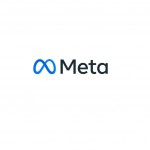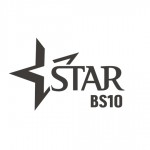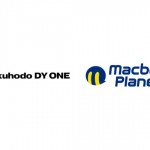プレミアム枠の自動取引の説明書:どのように動く仕組みなのか?なぜ、媒体社は価値向上に繋がるのか?(英文)
There has been a lot written around the new industry buzzword, Programmatic Premium. The amount of press devoted to it in the last three months is not the be underestimated. This after all is the sweet revenue spot for most premium publishers, and would represent a fair chunk of their actual revenue. Not surprisingly a collection of ad technology vendors have been trying to position themselves as the “programmatic premium” offering of choice.
But before we go into nuances of the impending face-off between ad tech’s middle layer, let’s cut through the noise and investigate what “programmatic premium” really means and who is trying to service the space. Let’s discuss the term. programmatic premium, in the first instance.
What we are really talking about here is the automation of the premium layer – a more efficient way to trade premium impressions beyond the I/O-driven, ad-ops-resource-heavy process. There are effectively three ways to accomplish the automation of premium: 1) through RTB (but not impression-level buying); 2) via a direct sales platform; and 3) through an exchange.
Granted there other factors to take into account here, such as inventory forecasting and programmatic optimistion, but we will address these areas in a series of posts. Today we will start this series on programatic premium by examining the automated direct sales platform approach – and how it compares to our other options.
The direct sales platform was seen by many industry figures up to this point as a quaint offering. I mean a static buy using an interface is hardly the stuff ad tech engineers get excited about – or trade press scribes salivate over. Programmatic direct premium buys via a platform or interface is effectively a “green field” area for the industry. Unsold and how it was traded grabbed much of the industry’s attention for the past two years. But now the “fat middle” that sits in between manual direct sales and remnant sales is finding its stride – the direct sales platforms are staking their claim.
There are three companies looking to dominate, namely ShinyAds (US), Adslot (Australia) and isocket (US). No disrespect to AdSLot and ShinyAds, buy we’ll focus on isocket for the minute, as it currently seems to be leading the way in the direct sales channel – and has of late been the subject of much M&A speculation.
Over the past twelve the company has been quietly building out its solution. It has integrated with the dominant publisher ad server, DFP, and has taken an open approach to its business, building APIs for easy integrations with its solution. It works with a number of white label offerings as well as DSPs, which are looking at offering its buyers wider access to all classes of inventory.
So how does it work? Set pricing via an interface, with purchased campaigns pushed via API calls directly to the publishers ad servers? Why would you want to trade premium in this way? Efficiency? Access to greater premium spend? And what targeting capabilities can you have on a static buy? Here Ben Trenda, CRO at isocket, give us more detail on how the process works, and why it will lead the way in “programmatic premium”.
Why should the direct sales approach offered by iscoket should be the preferred option for programmatic premium over RTB and the ad exchange?
First off, we’re big fans of RTB and it’s derivatives, namely private exchanges and deal ID’s. In fact, many of our team were part of building the RTB ecosystem we know today (isocket is comprised of people from Google, Rubicon, AdMeld, Yahoo, AOL, Doubleclick, etc). RTB and Private Exchanges have improved yield for publishers, and increased efficiency for advertisers. Clearly, this was a major improvement over the previous technologies for buying and selling remnant inventory, such as ad networks, etc. You can call it remnant or something else, but it’s still fundamentally unsold inventory. It has to be— and this is why there is a glass ceiling that private exchanges and things like “first look” have not been able to crack.
Why? It has to do with the way inventory flows into the RTB environment. When a user loads a page, the browser calls the publisher’s ad server and essentially says, “give me an ad.” So that ad server has to choose between serving a guaranteed ad that was sold by its direct sales team (probably to a high value brand advertiser where there is a personal relationship on the line)– or call the SSP, exchange, DSP, or network ad tag and HOPE that they sell the impression in an auction environment. And if it does get sold, the publisher loses a lot of control and transparency, and usually price. It’s a bird in the hand vs. 1/10 of a bird in the bush. That’s why when you go to a premium publisher’s site, you see direct sold ads for several pages before you get to see an RTB ad.
Why would a publisher want to execute programmatic premium via a direct sales interface like isocket?
Today, at least 2/3 of digital spend still occurs on paper contracts direct between publishers on one side, and agencies and advertisers on the other. There’s basically no tech there today, which is why isocket came to the conclusion a couple years ago that there’s a huge opportunity to bring programmatic efficiency to the direct buying and selling of Class 1 inventory (Class 1 being a Yahoo-originated term for the premium, direct sold stuff).
There are still those who believe that this glass ceiling exists because of inertia and that, in some utopian future, every impression will clear in an auction (some of these would concede that very custom programs would be exempt). Regardless, I disagree. Think about it— what other industry has a perishable product that is sold wholly in a spot market auction? Futures markets exist for a reason. Del Monte Foods doesn’t buy corn one barrel at a time. It’s not because they want custom corn— it’s because they need assurance that they’ll have corn when their business needs it, at a price they can count on. Similarly, producers benefit from futures because they can lock in demand and price in advance, and manage their businesses accordingly, minimizing risk on both sides.
Move away from an abstract analogy and it becomes even more obvious… Today, a major brand like Nissan has something like a $2Bn marketing budget, of which maybe 10% ends up in digital advertising. And a fraction of that ends up in “programmatic” channels. So when there’s a delivery or quality issue today, some people might get upset, but it doesn’t impact Nissan’s ability to sell cars that year. But as advertising becomes more digital, and digital becomes more programmatic, it’s myopic to think the largest buyers and sellers won’t want the benefits they currently enjoy with the direct buying and selling of premium reserved media.
But it’s also obvious that the status quo of direct is painfully outdated and ripe for disruption. There are estimates that it costs over $40k in operational overhead to build and execute a simple media plan, not to mention about one month of time. And you still have manual data entry errors, delayed campaigns, discrepancies, zero transfer of learnings among publishers or line items, or even from the traditional media plan to the RTB environment.
This is where we’ve been innovating for a year and a half now. Many people, particularly the small, well known crowd in the programmatic world, thought we were crazy until around 6 months ago, but now we’re inundated with phone calls from premium publishers, advertisers, strategic partners, portals, and even the major programmatic incumbents. And we’re even starting to see both SSP’s and some small self-service companies using some of our terminology in public messaging, which is fine with us. We simply want to see this change occur in the world, and of course, we’ll be happy to have some competition once those companies build the infrastructure needed to support their aspirations.
How does the automated direct sales approach work – and what are the benfits for publishers?
The infrastructure that has been built in the past for RTB won’t translate well into the world of Programmatic Reserve.
For one thing, the SSP’s, exchanges, DSP’s, and most self-service companies hand publishers ad tags, which as described previously, become relegated to unsold inventory, almost by definition. By contrast, we pre-integrate into the publisher ad servers such that we eliminate the opportunity cost problem for publishers. To be clear, I’m not talking about a “first-look” (which really means “first look” at the remnant). Rather, our system has access to inventory in the same way publisher sales teams do— we can make a market for inventory without taking the inventory. So no inventory gets allocated until there’s a deal that’s been agreed to by both publisher and buyer, and then when it is allocated, it’s treated as true premium, on par with and indistinguishable from a true direct sold deal.
Does this make sense for premium publishers? Yes, resoundingly. We signed up 1500 publishers before we hired our first publisher sales person, so we must be doing something right. More than a couple comScore top 100 publishers have told us our value proposition is a “no-brainer” (their term).
More importantly, though, the needs for control, transparency, assurance, and identity management are far more acute when it comes to programmatic premium. Anyone who may want to play in this category will essentially be starting from scratch. The tech for programmatic reserve needs to be purpose built.
Is the direct sales approach addressing obvious pain points in programmatic premium that other options can’t really fix?
Now, you ask if this tech is boring compared with RTB… in some ways, simple and elegant solutions do seem boring (remember that Blackberry executives famously called the iPhone a toy when it launched). But to get more specific, when you address all the operational friction in the direct buying and selling of premium reserve, a lot of interesting things become newly possible. Among them are the ability to test and scale quickly, to improve reach and frequency across the traditional media plan and RTB at the same time, to transfer knowledge from one environment to another. And this is just the start.
It makes sense that the luxuries enjoyed by programmatic buyers of RTB should become as available within the context of programmatic reserve as technically possible. We’ll continue to lead in this regard. Last year, we were focused on the infrastructure of connecting buy and sell side technology stacks, which needed to be in place before one could introduce advanced features on top of it. Stay tuned for a lot of news from us in the coming months.









